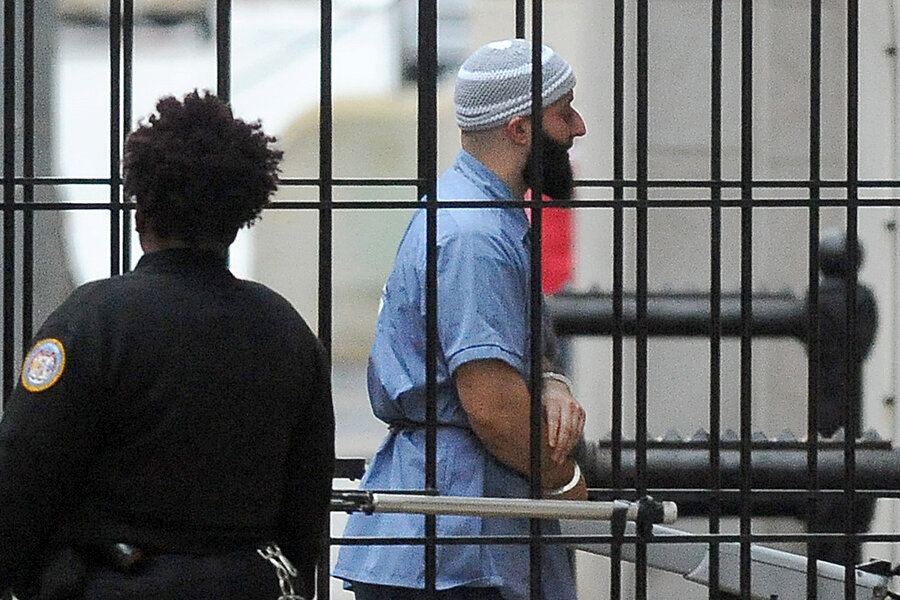Serial's Adnan Syed returns to court. What happens now?
Loading...
Podcast star and convicted murderer Adnan Syed will return to a Maryland appeals court Wednesday to argue for a new trial.
In 1999, when he was 17, Mr. Syed was accused of strangling former girlfriend Hae Min Lee and leaving her body in a Baltimore park. He was convicted and sentenced to life in prison in 2000. [Editor's note: The original story misstated Syed's age.]
Syed’s case had been closed for years when Rabia Chaudry, a Syed family friend, brought the case to producer Sarah Koenig, a former Baltimore Sun reporter. Through a multiple series podcast, Ms. Koenig conducted interviews with suspects and witnesses associated with the case, ultimately questioning the fairness of Syed’s trial. With millions of listeners tuning in each week, Syed gained a loyal following of fans insisting on his innocence.
“Not many ineffective-assistance claims get this worked up, this fully fleshed out,” said Maryland appellate attorney Steven Klepper, who believes there is a “significant” chance of a new trial, to The Baltimore Sun. “Adnan has excellent counsel and a lot of great facts on his side.”
The “great facts” surround two issues that were not addressed in his trial: alibi witness and former classmate Asia McClain, who claims she was with Syed at the time of the murder, and cell phone data that defense attorneys argue was used in a misleading way.
“We’ve waited a long time to get back into court and to put on witnesses that will prove our claim, and that’s exactly what we’re going to do this week,” Syed’s new attorney C. Justin Brown told the Associated Press.
Prosecutors called no eyewitnesses or and used no DNA evidence during Syed’s trial, and largely relied on cell tower data that they claimed linked Syed to the park area where Ms. Lee’s body was found. But Mr. Brown says the state intentionally excluded a cover sheet from the AT&T data that warns of the inherent unreliability of cell towers' locating services.
In addition, Ms. McClain is expected to testify Wednesday, which she did not do in the first trial. McClain filed an affidavit last year saying she could corroborate Syed’s alibi, and the defense will likely present letters McClain sent to Syed in prison in 1999 where McClain wrote, “I’m not sure if you remember talking to me in the library on 13 January but I remember chatting with you.”
Syed told his lawyer at the time, Christina Gutierrez, to contact McClain but she never did. Ms. Gutierrez was later disbarred in connection with other cases.
While McClain told The Sun last year she has “no doubt” that she saw Syed in the library on that January afternoon, she is not willing to claim his innocence outright.
“I know that across offices and homes in America, and beyond, people have been discussing Adnan’s guilt or innocence,” she tells The Sun. “I can only tell you what it is I know. Whether this information means that Adnan is innocent, or deserves a new trial, is a decision for others to make.”
Syed’s second chance at innocence is one of many true crime follow-ups in recent months that are straddling the line between entertainment and justice.
After Netflix aired the documentary series “Making of a Murderer” last month, over 180,000 people signed an online petition for President Obama to pardon the accused killer Steven Avery. And HBO’s documentary “The Jinx: The Life and Deaths of Robert Durst,” aired last year and is credited with finally charging suspect Robert Durst with murder.
And true crime fame definitely contributed to Syed’s second chance at justice Wednesday.
“We are confident that when the court hears all of the evidence it will do the right thing: Grant Adnan Syed a new trial,” Brown said Tuesday.






